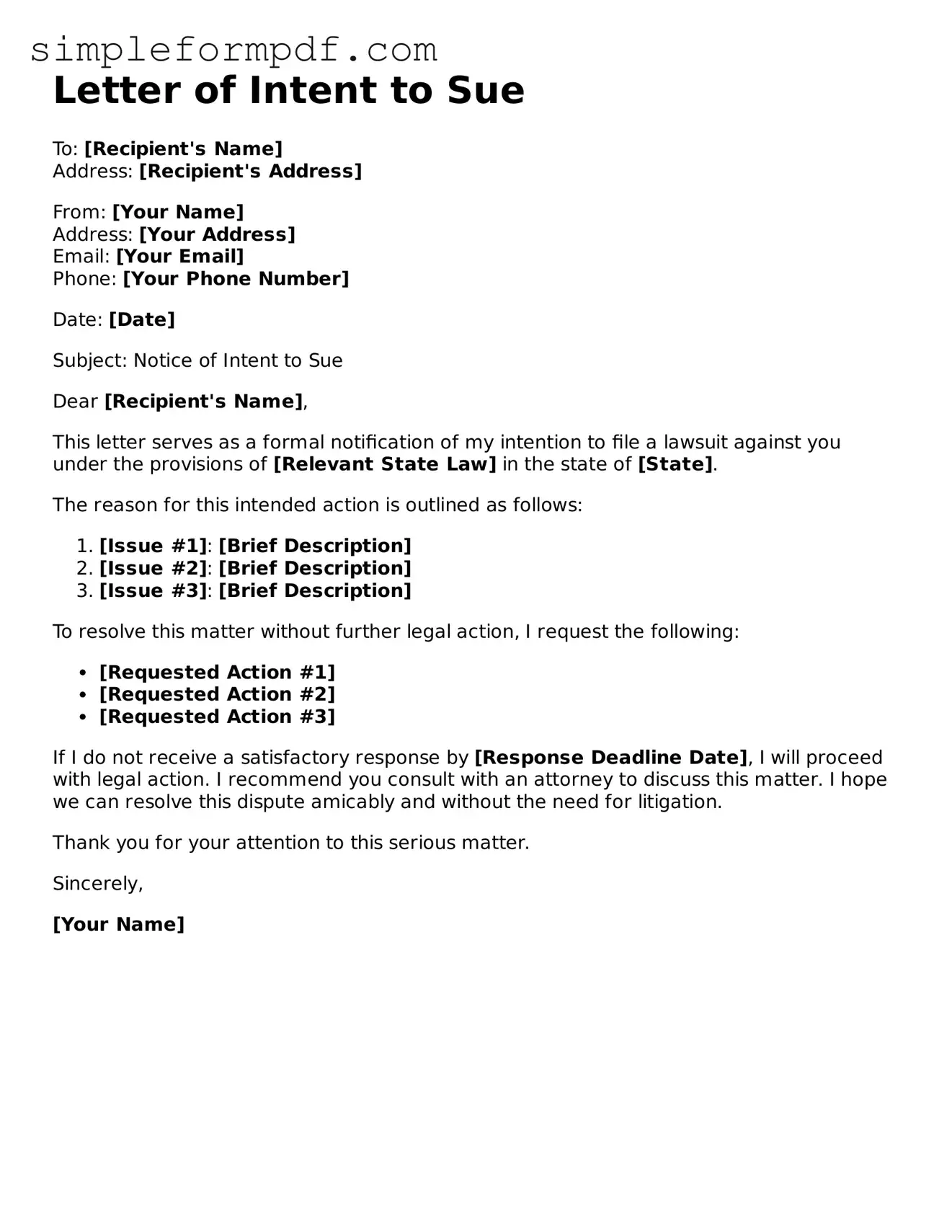Letter of Intent to Sue
To: [Recipient's Name]
Address: [Recipient's Address]
From: [Your Name]
Address: [Your Address]
Email: [Your Email]
Phone: [Your Phone Number]
Date: [Date]
Subject: Notice of Intent to Sue
Dear [Recipient's Name],
This letter serves as a formal notification of my intention to file a lawsuit against you under the provisions of [Relevant State Law] in the state of [State].
The reason for this intended action is outlined as follows:
- [Issue #1]: [Brief Description]
- [Issue #2]: [Brief Description]
- [Issue #3]: [Brief Description]
To resolve this matter without further legal action, I request the following:
- [Requested Action #1]
- [Requested Action #2]
- [Requested Action #3]
If I do not receive a satisfactory response by [Response Deadline Date], I will proceed with legal action. I recommend you consult with an attorney to discuss this matter. I hope we can resolve this dispute amicably and without the need for litigation.
Thank you for your attention to this serious matter.
Sincerely,
[Your Name]
